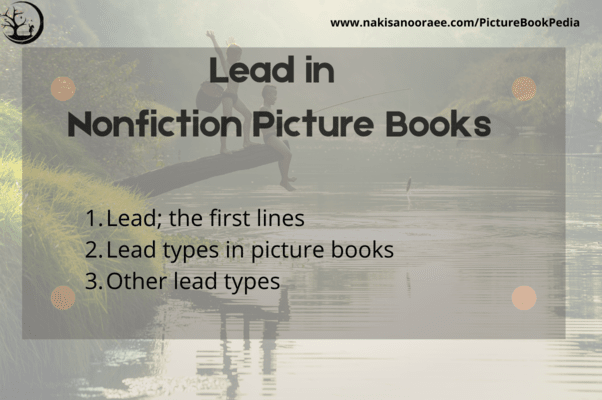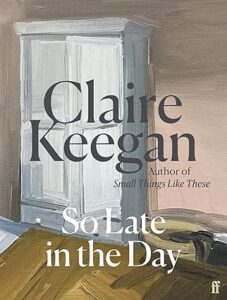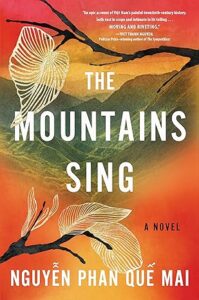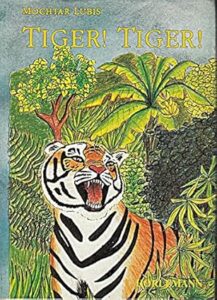What is a lead?
How do I begin? Theoretically, I knew that the first lines (lead) have the crucial job of drawing readers into the book and capturing their attention. But practically, how
to do so? If writing the first lines isn’t more difficult than writing the rest, it isn’t easier either.
I searched for the resources that analyzed the leads categorically. At the very least, having some options for brainstorming would be better than none.
In Chapter Five of A WRITER’S GUIDE TO NONFICTION, the author, Elizabeth Lyon, lists fifteen standard lead types. In other blog posts and YouTube videos, people
covered more or less the same list that Lyon did. Next, I examined the list of nonfiction picture books. Some lead types aren’t suitable for picture book readers, so I excluded them.
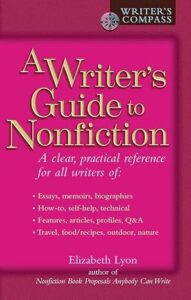
I use this list for brainstorming, not as an exhaustive checklist. I hope you find some ideas by reading this blog post too.
Lead Types In Picture Books
1. Direct Address
Direct address is a rhetorical technique when the Narrator/ speaker talks directly to an individual or group. It has been in use for a long time. In William Shakespeare’s
Julius Caesar’s play (1599), Mark Antony addresses a crowd with the now well-known phrase, “Friends, Romans, countrymen, lend me your ears.” We use this technique
in letters: “Dear Jane, ….”, or in speech, ” Ladies and gentlemen, ….”
Be careful: Direct address and second-person POV aren’t the same, even though they both use YOU to speak with the reader. The difference is the
Narrator. In Direct address, the Narrator can be any POV; first-person, second-person, or third-person. While narrating, the Narrator occasionally speaks to the reader or asks the reader questions and then continues to narrate.
- JUMPER: A DAY IN THE LIFE OF A BACKYARD JUMPING SPIDER (2023, Jessica Lanan) begins withWhat if you were very small? Smaller than a cat or a dog, a bar of soap, or a bottle cap, as small as a bean. What would your world be like?

- FLYING DEEP: CLIMB INSIDE DEEP-SEA SUBMERSIBLE ALVIN (2018, Michelle Cusolito and Nicole Wong) starts with Imagine you’re the pilot of Alvin, a deep-sea submersible barely big enough for three
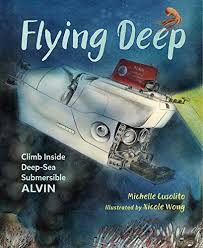
- HOW BIRDS SLEEP (2023, David Obuchowski and Sarah Pedry) It’s dusk. Unless you’re an owl, it’s time to get ready to sleep.
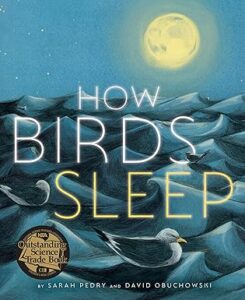
2. Factual Lead
This lead can include specific facts or be general. A factual lead is one of the most commonly used types of leads because it suits nonfiction topics well. However, the challenge is to find the right balance, not to dump a ton of facts in the reader’s head.
- From A HISTORY OF TOILET PAPER (2022, Sophia Gholz and Xiana Teimoy) In the beginning, potty time meant the great outdoors, with stones and seashells, grass, moss, leaves, and water or snow.

- ISLAND: A STORY OF THE GALÁPAGOS (2012, Jason Chin) “The sun is rising over lonely group of islands more than six hundred miles away from the nearest continent. The air is still and the sea is calm, but beneath the water, something is stirring.
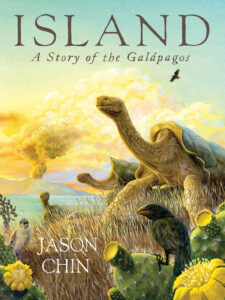
- IF ELEPHANTS DISAPPEARED (2019, Lily Williams) This is the Congo Basin forest. It’s a complex ecosystem filled with many different types of landscapes, plants, and animals. The animals that live here are strong, slippery, loud, and … big.
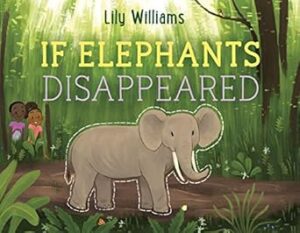
3. Descriptive & Narrative Lead
This involves the author’s point of view. It could be similar to a factual lead and can employ the facts but with the author’s takeaway.
- The lead in HONEYBEE: THE BUSY LIFE OF APIS MELLIFERA (2020, Candace Fleming and Eric Rohmann) is The adjectives “soft” and “fuzzy” showcase the author’s narrative approach to the topic. This lead includes factual information, yet it’s not purely factual because the description also conveys a feeling.Tongues lick. Antennae touch. Bodies clamber and scramble over thin wax womb. The new bee rests. Soft, fuzzy, and female—like all newly emerged worker bees.
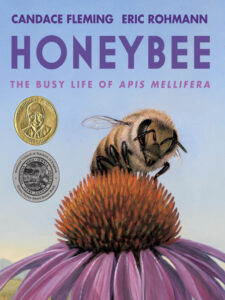
4. Question Lead
What could intrigue and engage the human mind better than asking a question? Why not use a question as the lead?
- THE SECRET CODE INSIDE YOU: ALL ABOUT YOUR DNA (2021, Rajani LaRocca and Steven Salerno) Why aren’t you fuzzy like a dog, or buzzy like a bee? Why can’t you eat ants with your nose, or breathe beneath the sea?
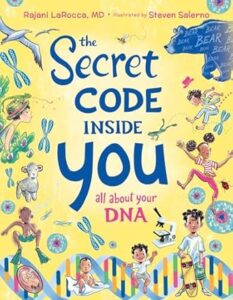
- THE GREAT LAKE: OUR FRESHWATER TREASURE (2024, Barb Rosenstock and Jamey Christoph) Can you see them on this map? The Great Lakes—Horun, Ontario, Michigan, Erie, Superior—five blue jewels set a bit off center in a belt across North America’s middle. How did they get there?

- Summer GREEN TO AUTUMN GOLD: UNCOVERING LEAVES’ HIDDEN COLORS (2019) by Mia Posada begins with the question, “The illustration shows different leaves with their names written beside them.What kinds of leaves do you see in the summer?
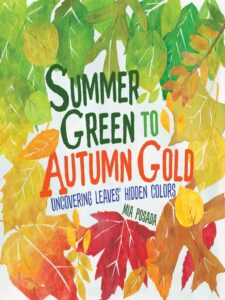
- If you want to see the full potential of this lead, read this: AN AMERICAN STORY (2023, Kwame Alexander and Dare Coulter)How do you tell a story that starts in Africa and ends in horror? How do you tell a story about slavery?…. How do you tell a story and not want to week for the world?Curabitur auctor dignissim dignissim tellus at ligula facilisis et varius sit ullamcorper lorem vestibulum amet dignissim facilisis in.
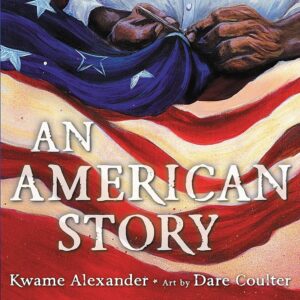
5. Quotation Lead
I could only find the following examples of this lead type:
- MAKE WAY FOR ANIMALS!: A WORLD OF WILDLIFE CROSSINGS (2022, Meeg Pincus and Bao Luu) begins with “The road is a visitor—Philosophy of the Peoples Way wildlife crossings team, Flathead Indian Reservation, Montana, United States.

- THE RIVER THAT WOLVES MOVED: A TRUE TALE FROM YELLOWSTONE (2022, Mary Kay Carson and David Hohn) starts with “Look deep into nature, and then you will understand everything better—Albert Einstein
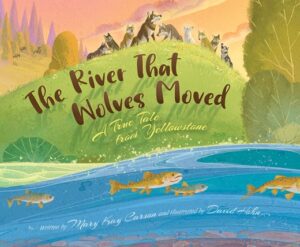
6. Summary Lead
In this lead type, the author begins with a summary of the book’s content right in the first line or the first page.
- ONE DAY THIS TREE WILL FALL (2024, Leslie Barnard Booth and Stephanie Fizer Coleman) starts with Look at it. Wounded, worn, twisted, torn. One day this tree will fall and this story will end. Won’t it?
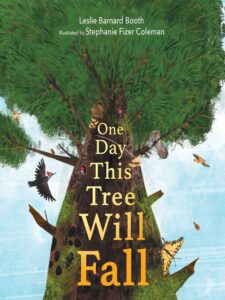
I couldn’t find any more examples of this type.
7. Shock lead
This lead opens with a surprising or shocking statement to grab the reader’s attention.
- THE MESS THAT WE MADE ( Michelle Lord and Julia Blattman) starts with ““. The illustration shows a boat on a river filled with garbage.This is the mess that we made
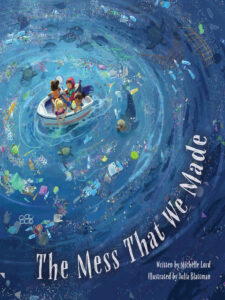
This type sounds very interesting. Have you bumped into other examples?
Other Lead Types
To complete our discussion, I’m adding the list of lead types that, in my opinion, don’t fit well in picture books and/or for which I haven’t found any examples. Please let me know in the comments below if you know of any examples of these types.
- Analogy and comparison
- Anecdotal or case history
- Metaphor
- Journalistic: this type crams as much information as possible into the opening, similar to a news report that fits all 5 Ws (who, what, where,
when, why) into the headline. - Controversial
- Statistical
- Thematic
In the next blog post, I’ll discuss Text structure and how to organize nonfiction text.
